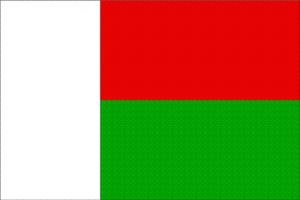Language/Plateau-malagasy/Grammar/Nouns-and-Gender
| ◀️ Introducing Yourself — Previous Lesson | Next Lesson — Pronouns and Their Usage ▶️ |
Plateau Malagasy nouns are divided into two genders: masculine and feminine. The gender of a noun determines how it changes and agrees with other parts of the sentence. An understanding of gender is essential for achieving proficiency in Plateau Malagasy language.
Don't miss the chance to check out these pages as you wrap up this lesson: Give your Opinion & Descriptive Adjectives.
Gender in Plateau Malagasy Nouns
In Plateau Malagasy, every noun is either masculine or feminine. The gender of nouns is not determined by biological sex, as it is in many other languages, but rather by semantic considerations. For example, words for occupation, such as "mpanao asa" (worker) and "mpandraharaha" (entrepreneur), are masculine, while words for natural phenomena, such as "rorombe" (rain) and "andro" (sun), are feminine.
It is important to learn and memorize the gender of each noun, since it cannot be inferred from any regular pattern or rule. However, there are some hints that can help learners make educated guesses regarding the gender of a noun. For instance, words ending in "-a" or "-ra" are usually feminine, while words ending in "-y" and "-ny" are usually masculine.
Masculine Nouns
Masculine nouns in Plateau Malagasy are characterized by a number of features, such as the use of "ny" as the definite article, and possessive pronouns that end in "-ny". They are also enumerated with the numerals "iraika" or "roa".
Examples:
| Plateau Malagasy | Pronunciation | English |
|---|---|---|
| lalana | [la'lana] | road |
| ravin-tanàna | [ra'vin-tana] | city center |
| ankizilaza | [an'ki-zilaza] | pencil |
Feminine Nouns
Feminine nouns in Plateau Malagasy have different features than masculine nouns. They use "na" as the definite article or a possessive pronoun. In addition, they are enumerated with the numerals "iray" or "roanjato" (for a group of thousands), or "talata" (for three).
Examples:
| Plateau Malagasy | Pronunciation | English |
|---|---|---|
| ràkoto | [ra'koto] | stone |
| toy | [tɔj] | bird |
| filazana | [fi'lazana] | explanation |
Gender Agreement
In Plateau Malagasy, words in a sentence must agree in gender. Therefore, adjectives, articles, and pronouns must match the gender of the noun. In addition, the verb must also agree in gender with the subject. If the subject of a sentence is masculine, the verb will be in its masculine form, and if the subject is feminine, the verb will be in its feminine form.
Examples:
- The boy is tall -> "Ny tanora lavitra" (lavitra is the masculine form of tall)
- The girl is pretty -> "Ny vadiny mahafinaritra" (mahafinaritra is the feminine form of pretty)
Conclusion
Knowing the gender of nouns in Plateau Malagasy enables you to write and speak correctly with proper agreement. Therefore, understanding the nature of gender in Plateau Malagasy nouns is an essential step in building a strong foundation in the language. Keep in mind that gender is not determined by biological sex in Plateau Malagasy, but rather by semantic considerations, so memorization and practice are essential to master it.
Other Lessons
- Plurals
- Descriptive Adjectives
- Pronouns and Their Usage
- Negation
- 0 to A1 Course
- Irregular Verbs
- Adjectives
- Pronouns
- Regular Verbs
- Give your Opinion
Template:Plateau-malagasy-Page-Bottom
| ◀️ Introducing Yourself — Previous Lesson | Next Lesson — Pronouns and Their Usage ▶️ |

